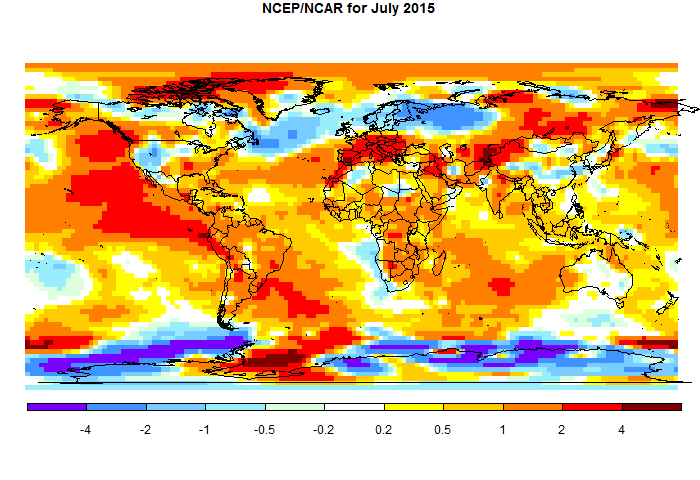The current maps, however, make this difficult because of the detailed patchwork of colors. Color mapping for daily data presents a dilemma, because of the high variation over land compared with sea. I thought I had an optimal solution, where the scale ensures that the 256 colors in my rainbow map occur equally often. From an information viewpoint, this makes the best use of our color discrimination capability. But the area is dominated by sea, where a lot of colors are used to resolve a fairly narrow range. That leaves only a few colors to represent the extremes on land, where the colors lurch from red to blue with little in between. But devoting more colors to the land range makes the oceans bland, and in particular ENSO patterns disappear. They are large relative to monthly average spatial variation, but not wrt daily.
I shifted the color scheme toward better land resolution, compromising with ENSO and ocean. But what I really want to talk about is a new scheme using spherical harmonic (SH) smoothing. This enables you to clear away as much as you like of the detail, and show broad swathes of warm/cool. It doesn't show the extremes of variation, but gives a better idea of how much the various regions contribute to the whole integral.
There is quite a lot of work behind the scenes, which I may describe in future. The SH is worked out in Javascript, so you can choose the level of smoothing. The WebGL plot, similar to that on the data page, has a selection box, where you can choose numbers from 3 to 13. The numbers represent approximately the spatial frequency - ie inverse of resolution. Choosing 3 means the characteristic wavelength is 1/3 the circumference etc. There is also the choice of Full, which is not smoothed, but the data shaded directly.
I'm planning to add this to the main page, which will take some data processing. The current model just shows one day, 27 August, when that cold spell took hold. The plot, with some explanation, is below the fold.
You can select a smoothing style from the selection box, then click the Plot New button below. You'll see that at lower resolution patterns seem to move about a bit. But you get a better idea of the relative magnitudes. As usual, the globe is a trackball, which you can drag about. The orient button will realign so the center line is N-S. The scale is in °C.
Update: I've updated to the latest date, 27th. In fact my earlier dating was wrong - I was showing 24 Aug, not 26th, which makes a difference to the cold spots. Antarctica is the apparent source of the big freeze. European Russia is also cold.


















